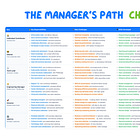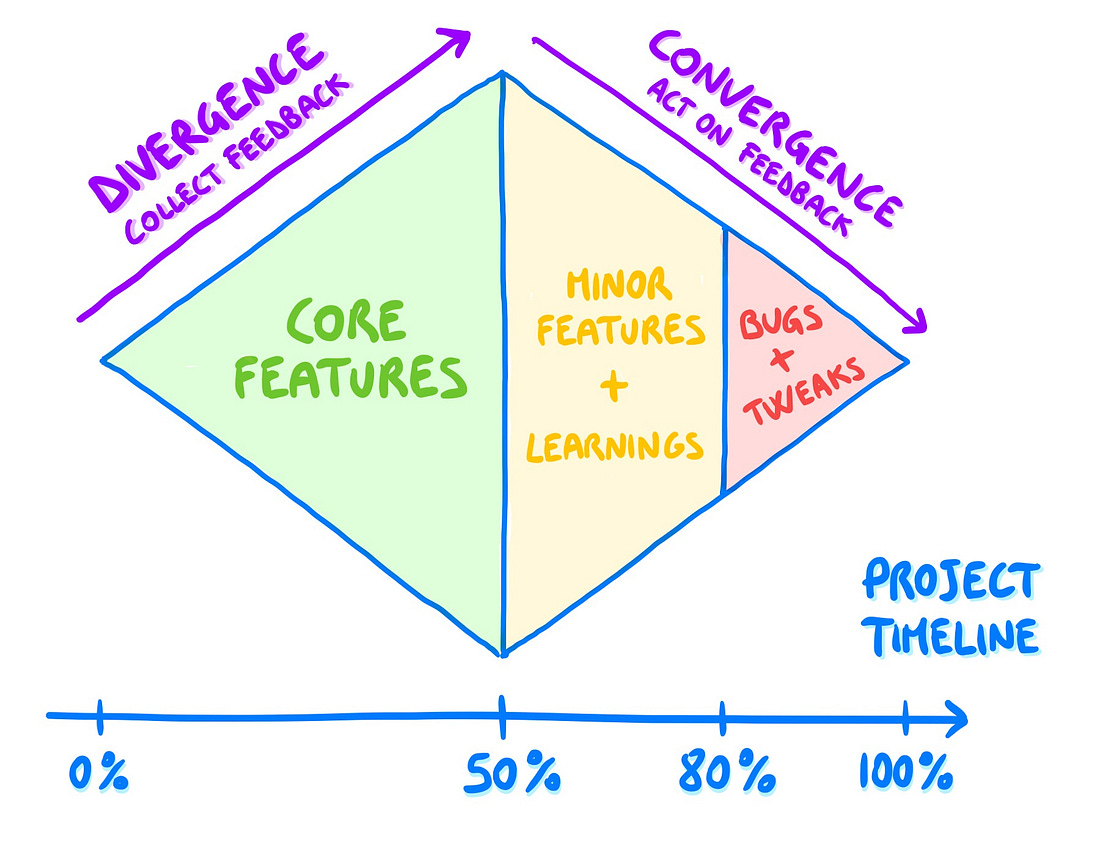How Shopify Executes Editions
Hey, Luca here, welcome to a new edition of Refactoring! Every week you get:
Here are the latest editions you may have missed: To access all our articles, library, and community, subscribe to the paid version: How Shopify Executes Editions 🚚A case study of how Shopify runs its famous bi-annual releases, plus how AI is changing its dev platform.There’s always been a gap — and will always be — between how fast startups can operate vs big tech. In many ways, this is an existential battle:
Technology plays a big role in this: in times when tech moves fast, startups often have the higher ground, as they are faster at jumping on it. Conversely, when platforms change less, there is equally less opportunity. Where does today fall on this spectrum? If you asked me a couple of years ago I would have said meh — web and mobile haven’t changed significantly over the last decade. But AI, of course, has changed everything. Companies large and small are scrambling to embrace the AI opportunity, both internally—upgrading their own tech and processes—and externally—offering AI-powered features across products. So, whether or not we agree there is substance or it’s mostly hype for now, we can’t deny there is a race going on — which is interesting to me because it reveals, among other things, which companies are able to execute properly under more urgency, and which simply are not. One company that I have followed closely over the years, because of its ability to steer fast and punch above its weight, is Shopify. You may remember our interviews with Farhan Thawar, VP of Engineering, and Kaz Nejatian, COO. With 8000+ employees, out of which ~50% are engineers, Shopify may not operate at the scale of Meta or Google, but is still squarely in big tech territory. Yet, Shopify often likes to zag when others zig: it stayed remote-first when its peers issued RTOs, doesn’t quite like meetings, and has a peculiar product strategy that focuses on two big releases per year: one during summer, and one during winter. From the outside, it also appears to operate at a higher throughput than its peers: it was one of the first to embed AI as first-class citizen into its product (with the launch of Sidekick last year), and recently revamped all of its dev platform to make everything AI-native (MCP support, infrastructure-as-code, etc). So last week I sat down with Eytan Seidman, Director of Product for the Developer Platform, and we talked for an hour about largely two things:
It was an extremely interesting chat — so here is what I learned! 👇 Disclaimer: I am a fan of what Shopify is building and I am grateful to them for partnering on this piece. However, I will only write my unbiased opinion about the practices and tools covered here, Shopify included. You can learn more about the latest Shopify Summer Edition below 👇 🗺️ The Strategy of Shopify EditionsAt first glance, Shopify’s model of shipping two major “Editions” a year seems to defy the very principles of continuous delivery that modern tech companies live by. How can a company with thousands of engineers orchestrate such massive, synchronized releases without grinding to a halt? The answer is, as Eytan tells me, that Editions are not what they seem. They are not a monolithic release — they are a storytelling layer built on top of a robust, continuous delivery engine. They are designed to capture customer attention and create a coherent narrative, without sacrificing the speed and autonomy of individual teams. Editions, however, are not cosmetic either: the features showcased are indeed made available after the big release. So how does this work in practice? 👇 1) Dual-track execution 🔀Shopify operates on two parallel tracks:
This strategy tries to balance two elements that are seemingly at odds: engineers thrive on continuous delivery, but customers and markets respond to moments. So, while small updates get easily lost in the noise, Editions create a gravitational pull, forcing the ecosystem to pay attention. They give Shopify a powerful lever to communicate its vision and a clear why behind all the new whats. 2) Balancing strategy & opportunities ⚖️For an Edition to be successful you need a cohesive theme, which obviously can’t be cobbled together a few weeks before launch, but is neither fully formed from the start. Eytan explains that leadership provides some direction early on, but remains flexible for opportunities. So, while some long-term strategic work is planned from the very beginning, it only makes up a fraction of teams’ time. A good chunk is left open to develop tactical ideas in response to where the market is going, to customer feedback, or to new emerging tech. A perfect example of this was the Winter 2025 Edition — aka the Boring Edition. While the focus on platform integration was clear from the start, a lot of the improvements (e.g. discounts with functions, functions on retail POS) were proposed bottom-up and came together during the period. This reminds me of what we argued in The Four Types of Work: planned business items, on a 3-to-6 month time horizon, have their place but can’t take up all of your team’s resources. You need some slack to 1) seize unexpected opportunities, and 2) perform KTLO + maintenance stuff. 3) The Convergence Ritual 🔬One of the most unique parts of Shopify’s process is an internal ritual they call “Convergence”. This is a dedicated, time-boxed period before each Edition launch where teams stop building new features and focus entirely on integration and quality. The goal is to move from a collection of siloed features to a single, seamless product experience. During Convergence, teams are forced to simulate the end-to-end user journey. A team that builds a new API doesn't just test the API — they have to use it to build a complete application, exactly as a third-party developer would. This uncovers friction points, integration gaps, and awkward workflows that would be invisible otherwise. It’s a mechanism for:
Personally, I am a fan of splitting long projects into divergence + convergence stages. Especially when you have a sizable timeline (e.g. 3+ months), I have found that a great way to ensure on-time delivery is to set the right trajectory in the various stages of the project. At the beginning this is more about collecting feedback and making sure you are going in the right direction (divergence), and in later stages it is about converging to a valuable outcome by incorporating feedback, reducing scope, and fixing bugs 👇 4) Durable teams vs task forces 🎽During our chat I asked Eytan what kind of team structure they use to deliver this, and in particular whether they use durable, long-lived teams which own specific product areas, or task-forces assembled to deliver the individual features. Eytan says Shopify combines both:
The goal of this model is, in a way, to have your cake and eat it too. Durable teams provide the rock-solid foundation, while task forces provide the agility and firepower to make bold bets and drive the innovation that powers each new Edition. Ultimately, this should help strike a balance between stability and innovation. So, if you are primarily working in one of the two modes, you can ask yourself these questions:
🏗️ Dev Platforms in the Age of AIIn the second part of our chat, Eytan explained how AI forced them to rethink the fundamentals of their developer platform. It’s no longer enough to have good APIs and well-written docs — you have to build a platform that is human-friendly for today, but also AI-ready for the future. As Eytan put it:
But what does "doing things right" mean? For Shopify, it means building a platform that is declarative, code-first, and frictionless — principles that were always valuable but have become existential in a world where both humans and AI agents need to interact with your platform 👇 1) Frictionless by design 💨The biggest focus of Shopify’s developer platform in recent months has been simplification. Shopify is almost 20 years old, which means over time its platform has sprawled into a large surface area that was hard to deal with by developers and AI alike. So, the latest edition brings a unified dev platform for both merchant developers and third party app developers, and a unified set of UI components to work with. The simpler the platform surface area, the easier things are to build for both humans and AI. 2) Everything as Code 🏛️While many platforms have invested heavily in visual builders and GUI-based configuration tools, Shopify has historically doubled down on a declarative, code-first approach. Every aspect of their platform—from app configuration to access controls—can be defined through code and configuration files. It's the same philosophy behind Infrastructure as Code (IaC), which we've covered many times before: instead of clicking through web dashboards, you declare what you want in a configuration file. If you ask me, IaC has always been a no-brainer, for many reasons:
None of this is new, but AI has flipped the economics:
So, practically speaking, an AI coding assistant can’t click a button, but it can read the docs, understand that (e.g.) a new scope is needed, add the right line to the app’s config file, and deploy the app through the CLI. Eytan believes this declarative foundation is the single most important prerequisite for AI dev platforms. The initial investment in building this "everything as code" model might have seemed like an incremental improvement a few years ago, but today, the ROI is mindblowing. It’s the groundwork that makes everything else possible. 3) The IDE is the New Hub 🤖For as long as Eytan remembers, Shopify developers split their screens as follows:
This is all changing now, as everything just happens in the IDE: AI reads all the docs and provides instant, context-aware answers in Cursor; it updates app config files without humans touching the admin panels, and runs the CLI commands to update the deployed app. On top of this, Eytan adds, MCPs further expand the IDE scope by allowing AI to operate full production apps: they can query the platform capabilities, look at logs to debug issues, and analyze ecommerce data to propose enhancements. The final goal is an invisible platform. Developers never have to leave their natural environment, and never have to context switch. So, a long-lived mantra at Shopify is "meeting developers where they are”: at the beginning, this meant supporting their favorite programming languages, but now, in 2025, it increasingly means enabling their IDEs and AI assistants to do the work for them. 📌 Bottom lineAnd that’s it for today! When I started this chat with Eytan, I expected to learn more about their peculiar release cycles — but we covered way more than that. Here are my favorite takeaways:
See you next week! Sincerely 👋 I thank again Eytan and the Shopify folks for partnering on this piece and making themselves available to all my questions! If you want to learn more about the latest Shopify Summer Edition, you can check it out below 👇 |






